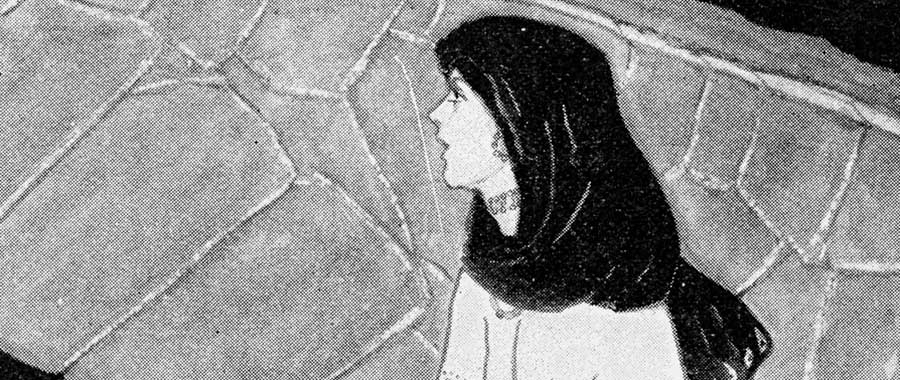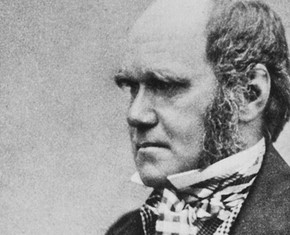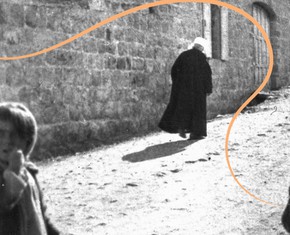The views expressed in our content reflect individual perspectives and do not represent the authoritative views of the Baha'i Faith.
As her fame spread throughout the world, Tahirih began to become a revered spiritual symbol of the growing women’s emancipation movement.
Marie von Najmájer, an Austrian writer and activist for the advancement of women, wrote the first literary work or poem to use Tahirih as a heroic character, “Gurret-ül-Eyn. (A Picture from the Persian Modern Times in 6 Songs),” published in 1874. She used the work of Kazem-Bek and Gobineau for her basic information, and recounted the persecution Tahirih faced, as told here by Abdu’l-Baha:
As Tahirih became celebrated throughout Karbila, and the Cause of His Supreme Holiness, the Bab, spread all over Persia, the latter-day ulamas arose to deny, to heap scorn upon, and to destroy it. They issued a fatva or judgment that called for a general massacre. Tahirih was one of those designated by the evil ulamas of the city as an unbeliever … – Abdu’l-Baha, Memorials of the Faithful, p. 182.
Many decades later, Marianna Hainisch, mother of a President of Austria, heard of Tahirih from Martha Root, and professed: “I shall try to do for the women of Austria what Tahirih gave her life to do for the women of Persia.” – Marzieh Gail, “With Martha,” in Martha Root’s Tahirih the Pure, p. 6.
In December, 1880, Michele Lessona, a prominent Italian scientist who had translated Darwin and went on to influence generations of Italian scientists, organized two conferences on the Babi movement. The proceedings were published as a book, I Babi, in 1881. Lessona went to Persia on behalf of the King of Italy in 1862, to serve as a physician for the delegation going to establish relations between the two countries. There in Tabriz Lessona met Daud Khan, who told him all about the Bab. He tried to visit the places associated with the Bab and met often with Gobineau, who had then become the French Ambassador to Persia. Most of Lessona’s information on the Babi Faith came from these two sources, especially Gobineau. He found it difficult, though, to get any first-hand information about the Babis:
… In Persia, it is impossible to speak of the Babis or to learn something of their affairs. The terror which this name awakens is such that no one dares to speak, or even think, of it.
Another Italian, Belgian-born Carla Serrana, travelled through Persia and wrote a travelogue, “Men and Objects in Persia,” which was published in 1883 and then translated into nine languages. Her account included a chapter, “Formation of the Babi sect,” based entirely on information from Gobineau in which she described Tahirih as an extraordinary talent. Serrana was the first European woman to travel to the Caucasus, through which she travelled alone in her fifties.
One of the most learned expositions of the Bab’s teachings, his life, and the history of his followers was written by Edward Sell, an Anglican churchman who was a missionary in India for years, authored over fifty scholarly works and could read Persian, Arabic and Hindi, among other languages. About Tahirih, he wrote:
Some of her poems breathe the spirit of Sufism and show how deeply her mind was imbued with mystic lore. This is far more apparent in the original than in any translation of them. – Edward Sell, “The Bab and the Babis,” p. 66.
Another insightful and generally well-informed account of the Bab’s life which included the story of Tahirih was “The Reconciliation of Races and Religions,” a 1914 compilation of talks given by Professor Thomas Kelly Cheyne, an English Christian minister, Biblical scholar, and Oxford professor. Possibly as a result of his study, he became a Baha’i. He wrote in his chapter on Tahirih that she had an exalted position:
Indeed, the only difference in human beings is that some realize more, and some less, or even not at all, the fact of the divine spark in their composition. Kurratu’l ’Ayn certainly did realize her divinity. – Thomas Kelly Cheyne, The Reconciliation of Races and Religions.
He gives a fairly accurate account of the story of her life in broad strokes, noting the close association of Tahirih with Baha’u’llah. He described her unveiling as a “… bold act of Kurratu’l ’Ayn which shook ̣ the foundations of a literal belief in Islamic doctrines among the Persians.”
Numerous accounts of the Bab and Tahirih appeared in American newspapers: The Methodist Quarterly Review, July, 1866, included a paragraph in, “Foreign Intelligence … France”; William Hepworth Dixon published a travel book in 1867, with a history and commentary which mentions the Bab and Babis twice; Evans, E.P. wrote, “Bab and Babism,” for Hours at Home, in January, 1869; Edwin Bliss also wrote a similarly titled article, “Bab and Babism,” for the Missionary Herald, May, 1869; “A New Religion,” appeared in the July 17, 1869 issue of All the Year Round; the Brooklyn Eagle, and The Hawaiian Gazette, carried stories on the new religion in their August and September, 1869, issues respectively; Robert Arbuthnot wrote a lengthy history of Faith titled, “The Bab and Babeeism,” which included some of its theology, teachings and a paragraph on Tahirih, for the August, 1869, issue of Contemporary Review; the August, 1869, issue of Saturday Review of Politics, Literature, Science and Art, published an article, “Reviews: The Philosophical Year and the Bábys [Babis],” which mentioned Gobineau’s version of her martyrdom; the article, “The Bábys,” in The Church Missionary Intelligencer, June, 1872, included a long introduction that showed how Muhammad got his teachings on the progressive nature and continuity of religion from Christianity and Judaism and how the Bab’s teachings were also influenced by Christianity, and it described Tahirih as eloquent and beautiful. – Moojan Momen, The Babi and Baha’i Religions, pp. 24-25.
Another lengthy summary of the Babi Faith, “Babysme,” appeared in the 1868 version of the French Encyclopedia, L’Annuaire encyclopédique. The entry attempted to explain the Bab’s teachings such as the common divine origin of all religions, the brotherhood of man, and the new social laws. A substantial paragraph on Tahirih gave some of her biographical details, emphasized her physical beauty—saying her “charms and seductiveness” helped the Bab’s faith as “only a woman could do,” and stating that she was called ‘Solace of the Eyes’ because of her beauty, which was inaccurate. She was one of the pillars of the new faith, the article said, with the courage to break with the past.
This series of essays is excerpted from Hussein Ahdieh’s and Hillary Chapman’s The Calling, available here: https://www.bahaibookstore.com/The-Calling-P8882.aspx
















Comments
Sign in or create an account
Continue with Googleor